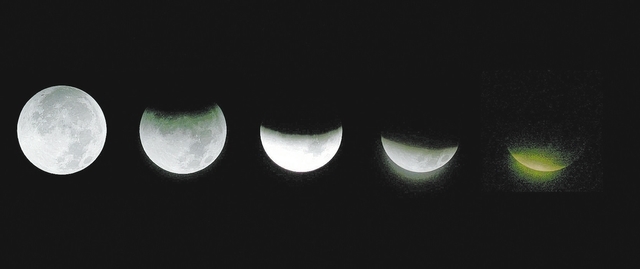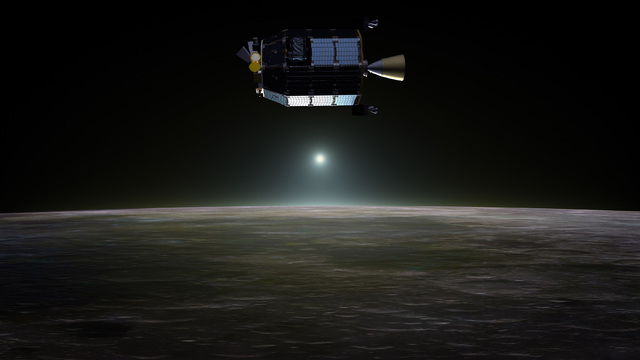Las Vegas’ next big show opens Monday night — a red lunar eclipse
If you’re not already a night owl, you might consider becoming one today as the moon will turn red in a total lunar eclipse overnight.
A lunar eclipse is when the moon moves into Earth’s shadow. For those of us who missed astronomy class, here’s a recap:
The moon orbits around Earth while Earth orbits around the sun. Tonight, the three will line up almost exactly, so that the moon will be behind Earth and right in the middle of its shadow.
As the moon moves into the shadow, it will appear to get darker and turn red. Astronomers sometimes call it a “blood moon.”
That’s from light around the edges of the Earth — essentially sunrises and sunsets — splashing on the lunar surface and faintly lighting up the moon, said Alan MacRobert, senior editor at Sky &Telescope magazine.
You won’t need a telescope or binoculars. It will be visible from just about anywhere in the United States starting at 10:58 p.m. local time. The eclipse will reach totality just after midnight and last about an hour before it starts to move out of the shadows again.
Robert Pippin, planetarium manager at the College of Southern Nevada, said as long as it’s not cloudy, you won’t have to go anywhere specific to see the eclipse. Even if you live in the middle of the valley amid heavy light pollution, it should be visible, though for not as long.
If you want a closer look, the CSN Cheyenne campus planetarium, at 3200 E. Cheyenne Ave. Suite 1A in North Las Vegas, will remain open through the whole eclipse. A special lecture about the eclipse will be given and several telescopes will be available.
For icing on the cake, Saturn, Mars and the Orion Nebula will also be visible tonight. Members of the Las Vegas Astronomical Society will bring their own telescopes to the planetarium, along with video monitors.
Though 11 p.m. might be past bedtime for the kids, the planetarium event will be family friendly.
The planetarium only holds about 70 people, so visitors are encouraged to get there early, Pippin said.
Reid Wolcott, a meteorologist for the National Weather Service in Las Vegas, said viewing the eclipse tonight should not be a problem because the forecast is calling for mostly clear skies. “There may be a few clouds but nothing substantial so you should be able to see part of it,” he said.
If you can’t stay up tonight, Wolcott said there will be three more eclipses this year.
“The next is an annular solar eclipse on April 20, a total lunar eclipse on Oct. 8 and a partial solar eclipse on Oct. 23,” he said.
In an odd twist, two out of the four eclipses this year fall on Jewish holidays. Today’s eclipse falls on the first day of Passover, an eight-day long celebration marking the liberation of the Israelites from Egyptian slavery.
The Oct. 8 eclipse occurs during Sukkot, a weeklong agricultural festival that centers around giving thanks for the fruit harvest.
For more information about the CSN Planetarium and Observatory, call 702-651-4138 or visit www.csn.edu/planetarium.
Reporter Ann Friedman and The Associated Press contributed to this report. Contact Annalise Porter at aporter@reviewjournal.com or 702-383-0264.























